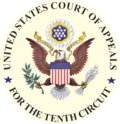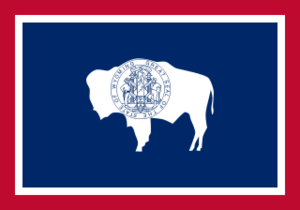By John M. Husband
 Does an employer have to engage in an interactive discussion about reasonably accommodating the wearing of a headscarf (i.e., hijab) in contravention of its dress code simply because a job applicant wears a headscarf to the job interview? No, according to a recent decision by the Tenth Circuit Court of Appeals. The Court ruled that to establish a religious accommodation claim under Title VII, the plaintiff must establish that he/she informed the employer that he/she adheres to a particular practice for religious reasons and that the plaintiff needs an accommodation for that practice, due to a conflict between the practice and the employer’s neutral work rule. EEOC v. Abercrombie & Fitch Stores, Inc., No. 11-5110 (10th Cir. October 1, 2013).
Does an employer have to engage in an interactive discussion about reasonably accommodating the wearing of a headscarf (i.e., hijab) in contravention of its dress code simply because a job applicant wears a headscarf to the job interview? No, according to a recent decision by the Tenth Circuit Court of Appeals. The Court ruled that to establish a religious accommodation claim under Title VII, the plaintiff must establish that he/she informed the employer that he/she adheres to a particular practice for religious reasons and that the plaintiff needs an accommodation for that practice, due to a conflict between the practice and the employer’s neutral work rule. EEOC v. Abercrombie & Fitch Stores, Inc., No. 11-5110 (10th Cir. October 1, 2013).
In the Abercrombie case, an assistant manager named Heather Cooke interviewed Samantha Elauf, a seventeen-year old applicant for an in-store sales position. Ms. Elauf wore a headscarf to the interview. Though they did not discuss religion, Ms. Cooke assumed that Ms. Elauf was Muslim and that her Muslim religion was the reason she wore a headscarf. During the interview, Ms. Cooke described some of the dress requirements expected of Abercrombie employees but neither she nor Ms. Elauf specifically referred to or discussed the wearing of a headscarf. After the interview, Ms. Cooke believed Ms. Elauf was a good candidate for the job but was unsure whether it would be a problem for her to wear a headscarf since Abercrombie has a strict “Look Policy” that forbids wearing of “caps” and black clothing. Ms. Cooke consulted with her district manager who rejected Ms. Elauf for hire because she wore a headscarf which was inconsistent with the Look Policy.
EEOC Files Lawsuit Alleging Retailer Failed to Accommodate Applicant’s Religious Practice
In 2009, the Equal Employment Opportunity Commission (EEOC) filed a lawsuit in federal court in Oklahoma alleging that Abercrombie violated Title VII by refusing to hire Ms. Elauf because she wore a headscarf and failing to accommodate her religious beliefs because it failed to make an exception to its Look Policy. The Oklahoma court ruled in favor of the EEOC on summary judgment, reasoning that Abercrombie had enough information to make it aware that there was a conflict between the applicant’s religious practice and its Look Policy that would require an accommodation. It emphasized that Abercrombie had made numerous exceptions to its Look Policy over the past decade or so, including eight or nine headscarf exceptions. The parties went to trial on the issue of damages where a jury awarded the EEOC $20,000 in compensatory damages.
Religious Accommodation Claim Requires Plaintiff to Inform Employer of Conflict between Religious Practice and Employer Policy
On appeal to the Tenth Circuit, Abercrombie argued that it was entitled to summary judgment because there was no dispute that Ms. Elauf never informed the company that her practice of wearing a headscarf was based on her religious beliefs and that she would need an accommodation for the practice based on the conflict between it and the Look Policy. A divided Tenth Circuit agreed. Two of the three judges on the panel ruled that the plaintiff in a religious accommodation case must establish that he or she informedthe employer of his/her religious belief that contradicts with an employment requirement and the plaintiff must request an accommodation. Because Ms. Elauf never informed Abercrombie that she wore a headscarf for religious reasons and never requested an exception from the dress code, the court reversed the grant of summary judgment to the EEOC and vacated the jury award with instructions to enter judgment in favor of Abercrombie. The majority stated that it is only after an employer is put on notice of the need for a religious accommodation that it must actively engage in a dialogue with applicants or employees concerning their conflicting religious practices and possible accommodations.
Dissenting Opinion and Conflicting Circuit Court Decisions Set Up Possible Appeal to Supreme Court
The dissenting judge strongly disagreed with his two colleagues on the panel, believing that Abercrombie should not be permitted to avoid discussing reasonable accommodations for Ms. Elauf’s religious practice when it knew that she wore a headscarf, assumed she was Muslim and wore the headscarf for religious reasons and knew that its Look Policy prohibited its sales models from wearing headwear. The dissent noted that Ms. Elauf could not inform Abercrombie of a conflict between her religious practice and its dress code because she did not know the details of the Look Policy or that headwear, including a headscarf, was prohibited. The dissenting judge would have sent the entire matter to a jury to decide if Abercrombie was liable for religious discrimination.
The dissenting opinion points out that other circuit courts of appeal have held that a job applicant or employee can establish a religious failure-to-accommodate claim if he/she can show that the employer knew of a conflict between the plaintiff’s religious beliefs and a job requirement, regardless of how the employer acquired knowledge of that conflict. Unlike the Tenth Circuit, these other circuits do not require that the plaintiff actually inform the employer of the conflict. The stage is set for the EEOC to ask the U.S. Supreme Court to resolve the disagreement between the courts to ultimately decide whether a plaintiff must actually inform the employer of the conflict between his/her religious practice and a job requirement before the duty to discuss reasonable accommodations kicks in.
Employer Lessons
This opinion is favorable for employers in the states within the Tenth Circuit’s jurisdiction, namely Colorado, Oklahoma, Kansas, Utah, Wyoming and New Mexico. That said, employers should always be cautious about making adverse employment decisions when it has knowledge or information that relates to an applicant/employee’s religious beliefs or practices.
Disclaimer:This article is designed to provide general information on pertinent legal topics. The statements made are provided for educational purposes only. They do not constitute legal advice and are not intended to create an attorney-client relationship between you and Holland & Hart LLP. If you have specific questions as to the application of the law to your activities, you should seek the advice of your legal counsel.





